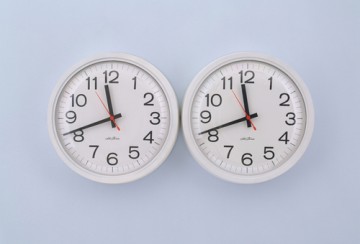My latest Internet obsession is Quora.com. Quora describes itself as “a continually improving collection of questions and answers created, edited, and organized by everyone who uses it.” It’s like Yahoo Answers, where users can both pose and answer questions on any topic imaginable. Perhaps because it’s still new, or maybe because they have some secret sauce I’m not aware of, Quora is much, much better than Yahoo Answers. The questions, and the people answering them, are usually very smart. The current Quora population seems to be heavily weighted towards social media and tech start-up types, but there are some interesting questions about art and design as well. One question that has been of particular interest to me lately is this:
Today, what is the difference between art and design?
The distinction between the two seems like it should be simple, and a growing number of users have taken a crack at it. The answer that currently has the most votes from other users is by David Norris, who says “Design solves a problem, art is expression.” While I bristle at the idea of summing up all of art history as “expression,” a similar sentiment is echoed by other users, including, “Design is a means to an end. Art is an end in itself.”
Still, I’m not satisfied with what the Quora hive-mind has come up with on this one. I think there’s a good deal more subtlety to both art and design. Over the last 50 years or so, both art and design have expanded their fields (to borrow Rosalind Krauss’s term) to such an extent that they operate far beyond the original material and conceptual bounds that once defined them. Given this expanse, we’re sure to find examples where the two are operating in each others’ fields. There must be instances where art and design are doing the same thing and calling it by different names, right? If we look at those overlaps, where does that lead us in trying to create a differentiation between the two? I’ll explore this idea over the course of several posts, but to begin I’ll look at two artists and two pairs of clocks.
In 1991, Cuban-American artist Felix Gonzalez-Torres produced Untitled (Perfect Lovers). The piece consists of two identical mass-produced clocks placed side by side on a light blue wall. Initially, the clocks are both set to the correct time, but eventually they will drift apart. As with many of Gonzalez-Torres’s works, the clocks are often seen as a tragic double portrait, reflecting the fragility of life and love in the face of the AIDS epidemic. Gonzalez-Torres’s lover died of AIDS shortly after Perfect Lovers was produced. The artist himself died of AIDS in 1996.
In 2002, a mischievous young designer named Tobias Wong produced Perfect Lovers (Forever). It also consists of two mass-produced clocks. At first, it seems to be a direct copy of Gonzales-Torres’s iconic piece, but the wry difference becomes clear over time. Wong’s clocks are outfitted with radio receivers that keep each clock synchronized with the U.S. Atomic Clock, ensuring they both stay accurate to within one second over a period of a million years.
Untitled (Perfect Lovers) is such a beautiful and touching piece because Gonzalez-Torres creates a problem without giving the viewer the comfort of a solution. The two clocks, despite the fact that they seem to be a perfect pair, are flawed. They differ, they can never really be one. They will drift apart, they will disagree, they will measure and reflect the world in different ways. The fabric of their being ensures that eventually they’ll end up in conflict.
Wong’s Perfect Lovers (Forever) does what design does, it provides a solution. But in doing this, Wong removes all the tragic beauty from the original. This conceptual twist has its own poetic power, however. By fixing Gonzalez-Torres’s “problem,” Wong brings to light a new problem: the utopian ambitions of design itself. What if design’s ambition to fix the world has a dark side? When we fix a problem, what do we lose?
Incidentally, Tobias Wong also died young and under very tragic circumstances. (Wong’s death is puzzling, and too complicated to go into here, I recommend this New York Times piece, “The Mysteries of Tobias Wong”). While Wong operated in the design world, his work has a lot in common with the great artist-pranksters of the past, such as Marcel Duchamp and the Fluxus group. In fact, I would say that Wong wasn’t really a designer at all; rather, he was a conceptual artist operating in the field of design.
Let’s return to the original question from Quora, “Today, what is the difference between art and design?” In light of Felix’s and Tobias’s clocks, I would say this: Design solves problems, art creates problems.






Pingback: Clients, Pithy Quotes, and Jenny Holzer | Art21 Blog
Pingback: Felix Gonzales-Torres’ Untitled (Perfect Lovers) « Art for Breakfast
Pingback: On Perfect Lovers » Reveiller